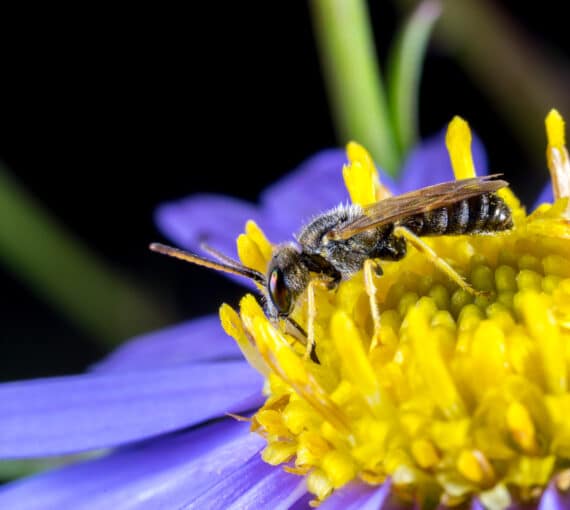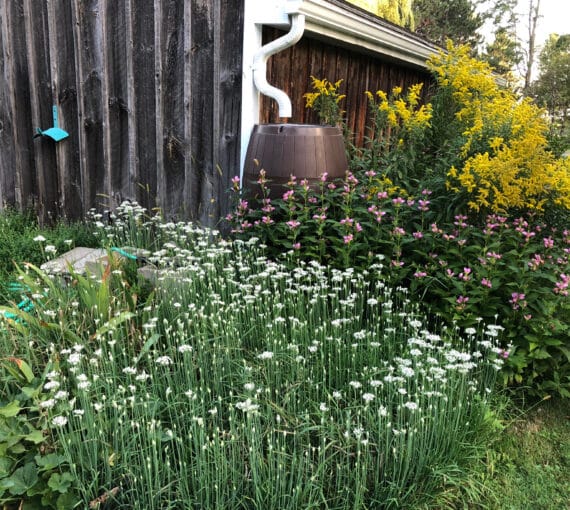
Outdated bylaws and enforcement have for too long restricted ecological and sustainable practices and landscapes that support biodiversity and contribute ecological services.
Massive fields of non-native turfgrass that suck up enormous amounts of water and require more pesticides than farms — that’s largely what urban and suburban areas in Canada and the U.S. have become. Lawns are a colonial relic, once seen as a sign of wealth and privilege. But those who want to convert theirs to something more useful, such as wildflower or food gardens and pollinator habitats, face hurdles.
That’s in part because many municipal governments and some homeowner associations prescribe what people can and can’t do with their yards. With growing water scarcity and rapidly declining insect populations, the movement to allow greater freedom in yard design and care is growing.
A group of conservationists in Canada — including the Canadian Society of Landscape Architects, Canadian Wildlife Federation, David Suzuki Foundation, Ecological Design Lab at Toronto Metropolitan University and author and environmental advocate Lorraine Johnson — recently published an open letter urging municipal bylaw reforms to support habitat garden development.
With growing water scarcity and rapidly declining insect populations, the movement to allow greater freedom in yard design and care is growing.
Outdated bylaws and enforcement have for too long restricted ecological and sustainable practices and landscapes that support biodiversity and contribute ecological services.
These restrictions can include prohibiting “weeds” without defining what that means, imposing height limits on vegetation even when there are no sightline issues, requiring special permissions to deviate from the outdated standard of manicured lawns, preventing native species planting under the guise of “weed control” and frowning on habitat features such as nurse logs and fallen leaves.
The benefits of shifting our perspective on yards are numerous. As the open letter notes, habitat gardens “attract and support a diversity of wildlife including birds, bees, and butterflies” and “demonstrate a proactive, local response to the global challenges of climate change and biodiversity loss.”
Planting gardens instead of turfgrass can also save residents money, cut down on water and pesticide use and reduce pest infestations. Gardens can even improve quality of life, as they connect people with nature, which has been shown to reduce stress and improve mental health and wellbeing.
Outdated bylaws and enforcement have for too long restricted ecological and sustainable practices and landscapes that support biodiversity and contribute ecological services.
Habitat and food gardens sequester carbon, acting as a hedge against climate change, and filter pollutants from air and water. They also reduce soil erosion, improve soil quality and reduce the urban heat island effect. And they can help manage stormwater and reduce local flooding.
There’s ample room for improvement. As part of its new LawnShare campaign, the David Suzuki Foundation released a study of seven Canadian municipalities showing that lawns cover vast areas of each city, with Toronto and Montreal blanketed in 80 and 97 square kilometres of lawn respectively.
The U.S. National Academy of Sciences estimates that converting as little as 10 per cent of lawns to natural vegetation “could significantly aid insect conservation, while simultaneously lowering the cost of lawn maintenance through reduced watering, and requisite herbicide, fertilizer, and pesticide applications.”
The U.S. Environmental Protection Agency says nearly one-third of residential water use goes to lawns, and the country’s Fish and Wildlife Service says lawns use up to 10 times more pesticides per acre than agricultural crops.
Transforming some of our sprawling lawn areas and other green spaces and changing our perspective on what a yard should look like will benefit people and other life forms.
As well as providing habitat for creatures critical to human survival, yards can be used to grow food. It’s not a new idea. During the First and Second World Wars, Canada, the U.S., U.K., Australia and Germany encouraged “victory gardens” that aided the war effort by reducing pressure on food systems and farms. Gardens and chicken coops appeared in yards, parks, school grounds, golf courses, railway edges and vacant lots. Sheep grazed on sports fields and kept grass in check.
Urban food gardens won’t replace agriculture, but they offer many benefits. As Vancouver writer Peter Ladner wrote in The Urban Food Revolution: Changing the Way We Feed Cities, “When urban agriculture flourishes, our children are healthier and smarter about what they eat, fewer people are hungry, more local jobs are created, local economies are stronger, our neighborhoods are greener and safer, and our communities are more inclusive.”
Transforming some of our sprawling lawn areas and other green spaces and changing our perspective on what a yard should look like will benefit people and other life forms. Some cities are showing leadership, but removing the barriers imposed by outdated bylaws and regulations would be a win all around!



